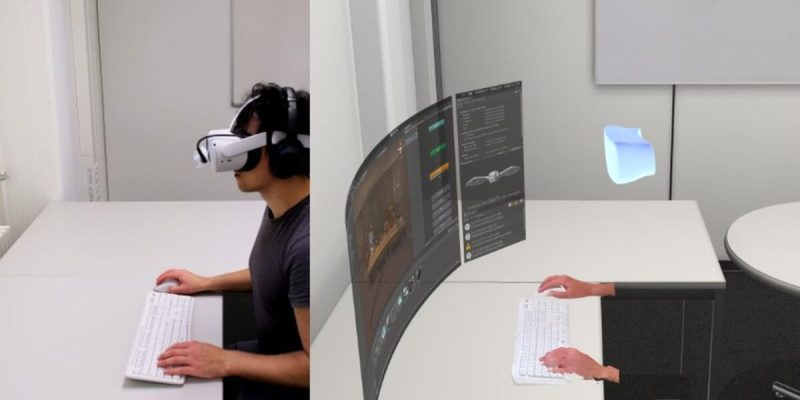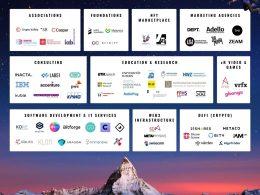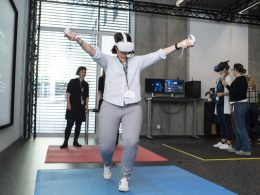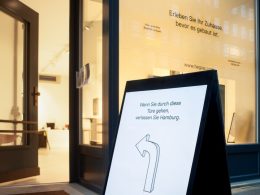Two researchers at ETH Zurich manipulate time at the VR workplace: to promote concentration, they fade out interruptions in reality via VR glasses and record them for later viewing.
Scientists at ETH Zurich present the concept of asynchronous reality in their research work. Here, time is paused in an immersive work environment to enable concentrated work. Subsequently, events missed in reality can be caught up on in virtual reality.
Time manipulation for more concentrated work in VR
A research team at ETH Zurich is dedicated to the immersive offices of the future and is developing a hitherto unique tool that shows what new possibilities the XR workplace could bring: Asynchronous Reality is intended to promote immersive work in virtual reality. This is to be achieved with the so-called Focus Mode, which stops time in the virtual workplace.
Interactions from reality or from colleagues working with you via an AR interface are faded out. Only when you deactivate the focus mode does time continue to run normally for you again and the events that are actually already past take place in your virtual workspace.
To create an asynchronous reality, the system reconstructs volumetric scenes with 3D depth cameras in real time. According to the researchers, it should be able to recognise causal dependencies of actions and selectively play back situations in the user's perception.
Asynchronous reality in everyday work: An example scenario
In a nine-minute video, the researchers present what a working day in asynchronous reality could look like. The example scenario shows a programmer working with his colleague in an immersive work environment on a VR game and the 3D design of an action figure developed from it.
The office is equipped with cameras and people and objects are streamed into the virtual environment via real-time 3D scans. After meetings in reality and a shared virtual work environment, the programmer switches to Focus Mode. To block out distractions, the VR goggles play a noise and the system only fades in scanned objects in the immediate vicinity, such as the mouse, keyboard or desk.
Past events are played back as holograms
If a colleague comes through the door, she is scanned by the cameras. However, the programmer does not notice this at first. The system saves the entire process and changes in the room that may occur, for example, if a new object is brought in.
These new objects are initially rendered only as glittering outlines. As a result, the programmer only notices them when he turns around of his own accord. He also does not receive any notification.
If he sees the new object and wants to examine it, he taps on it in virtual reality. The system plays the recorded event for him like a short hologram. He sees the colleague bring in the object, put it on the table and hears what she says to him.
Asynchronous Reality recognises causal relationships
If several events occur during the focus mode that change previous ones, such as the addition or removal of new objects, the system recognises the causal connections. It creates a timeline and automatically marks related events.
Thus, if the programmer first plays the event that happened last after completing the focus mode, the system first shows him the events necessary for understanding the entire process. Further examples and details of the prototype of the Asynchronous Reality Office can be found in the Research paper of the scientists.
Source: Mixed / Youtube









